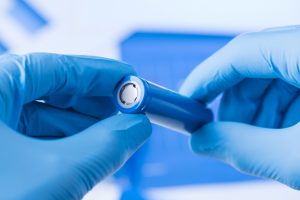Most take the world around them for granted, never expecting anything extraordinary out of what’s always proven to be, well, extra ordinary. According to Futurism, that’s what many felt about a methylene blue dye used to dye fabric in textile mills. Its remnants even considered a nuisance and a hazard, often making its way from the mill and into the environment, where it’s no easy task to clean up.
So researchers from the University at Buffalo began experimenting with the industrial dye, in an attempt to reuse the wasted material, turning the methylene blue wastewater into an environmentally safe material – in batteries.
To do so, the researchers created two batteries that used a solution of methylene blue and salt water to capture, store, and release electrons — three actions a power cell must be able to do. The batteries not only worked, they were nearly 100 percent efficient, putting out almost as much energy as that put into it. It turns out the dye was great for storing and releasing energy, proving their experiment successful.
The team now strongly believes this methylene blue wastewater from textile mills could be a viable material for flow (or “liquid”) batteries, ideal for storing energy from wind farms and solar panels. The next step is to test these batteries as a viable replacement.
If the team is right, this could prevent future dye wastewater from ever finding its way into the environment, instead, finding a permanent home in redox flow batteries.
The University at Buffalo researchers aren’t alone in their efforts to reinvent the battery field. In fact, countless scientists from all over the world will gather at AiMES 2018 this September 30–October 4, 2018, to present their work and discuss the future of batteries and more. The ECS meeting provides a central meeting spot for scientists, engineers, and researchers to come together, share results, discuss ideas, and possibly even collaborate. Don’t miss it. Meet the innovators and leaders of the electrochemical and solid state field this fall.



